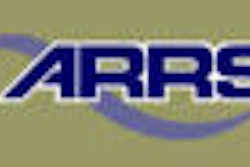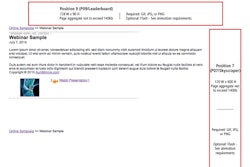Although diagnostic imaging has lately become a whipping boy for rising healthcare costs in the U.S., a study from Massachusetts General Hospital (MGH) in Boston contends that the cost of imaging technology in a hospital inpatient setting rose at roughly the same rate as other healthcare items.
The study, published in the June Radiology, retrospectively examined data on hospital costs for 17,139 patients admitted to the institution between 1996 and 2002.
The study sample was restricted to inpatients with diagnoses of stroke and transient ischemic attack (TIA), appendectomy, lung cancer, upper gastrointestinal conditions (such as esophagitis, gastroenteritis, and diverticulitis), colon cancer, and back problems. For each patient in the study, data on demographics, all products and services used, and costs associated with each product or service were obtained from the hospital's cost-accounting system (Transition Systems, a subsidiary of Eclipsys of Boca Raton, FL).
"In the database, relative value units are assigned to each product or service to reflect the time and/or complexity and are updated annually," the authors wrote. "Relative value units are then converted to costs by using a set conversion value" (Radiology, June 2005, Vol. 235:3, pp. 934-939).
The team then determined the utilization and cost of imaging by using institution-specific product codes for CT, MR, and all other imaging modalities. The authors noted that in the hospital's cost-accounting database, some CT and MR studies that are normally ordered as bundled images are counted as two individual images, which may have resulted in data on the number of images appearing inflated.
There were a total of 752 more patients admitted with the study's diagnostic criteria in 2002 than in 1996. In addition, the mean age of the study population decreased by nearly two years, from 59.6 in 1996 to 57.9 years in 2002. However, the authors observed that the mean length of a patient's hospital stay decreased by 1.6 days, from 7.0 days in 1996 to 5.4 days in 2002.
Between 1996 and 2002, the total number of CT and MR scans obtained annually of the study group nearly doubled.
"Three factors contributed to this increase: the number of patients included in the sample increased, a greater percentage of these patients underwent CT and/or MR imaging, and more images were obtained per patient (among those who underwent imaging)," the authors wrote.
CT showed the largest utilization increase, from 47% in 1996 to 61% in 2002, and the average number of images obtained per patient increased from 1.9 to 2.5 images, according to the authors. MR, on the other hand, showed only a slight increase in utilization, from 25% of the study population in 1996 to 26% in 2002. However, the number of images obtained with the modality showed a significant increase, from 1.8 images per patient in 1996 to 2.6 images by 2002.
The authors discovered that certain diagnoses demonstrated a profound increase in utilization of CT and MR.
"Over the study period, the number of CT scans obtained in patients who underwent appendectomy increased 694%, from 47 scans in 1996 to 373 scans in 2002," the authors wrote. "This was largely because of a 285% increase in the percentage of patients scanned (from 18% in 1996 to 69% in 2002)."
They also found that CT and MR imaging of patients diagnosed with stroke or TIA doubled between 1996 and 2002, from 751 scans to 1,621 scans for CT and from 829 to 1,620 for MR. Although there was a 5% increase in the number of patients imaged over the study period, the rise in utilization was attributed to a 67% increase in CT images per patient (from 1.5 in 1996 to 2.5 in 2002) and a 47% increase in MR images (from 1.9 in 1996 to 2.8 in 2002).
The authors measured imaging costs for the period, which increased at an average of 8.3% per year, against hospital costs, which rose at an average rate of 7.8% from 1996 to 2002. Overall, they determined that although imaging costs rose 51% over the seven-year time frame, hospital costs climbed 55%.
The authors performed multiple regression analyses of the data and were unable to resolve if imaging costs were predictive of total hospital costs. They did discover, however, that imaging costs were predictive of a patient's length of stay.
"According to the model, an increase of $385 in total imaging costs per patient was associated with a reduction of one day ($1,172) in total length of stay," they wrote.
The authors observed that the study relied solely on cost-accounting data from MGH, and that other institutions may have different constructs on how overhead costs are allocated and relative value units are calculated. In addition, they noted that the study only incorporated inpatient imaging, although most imaging is performed on an outpatient basis.
"If imaging studies that had been performed on an inpatient basis were shifted to the outpatient setting during the study period, our analysis would have underestimated the contribution of imaging costs to total costs," they wrote.
By Jonathan S. Batchelor
AuntMinnie.com staff writer
May 27, 2005
Related Reading
U.S. comptroller issues budget warning on Medicare, May 20, 2005
National health expenditures and another year of 'unsustainable growth', May 4, 2005
Medicare physician payment fix looks harder this year, April 8, 2005
U.S. Congress hears debate over federal imaging standards, March 17, 2005
Medicare panel endorses national privileging, Stark changes, January 18, 2005
Copyright © 2005 AuntMinnie.com



















